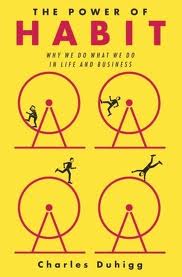 NYT previews The Power of Habit–a look at the latest thinking about how habits are formed (and how that knowledge helps sell diapers and Fabreze).
NYT previews The Power of Habit–a look at the latest thinking about how habits are formed (and how that knowledge helps sell diapers and Fabreze).
The process within our brains that creates habits is a three-step loop. First, there is a cue, a trigger that tells your brain to go into automatic mode and which habit to use. Then there is the routine, which can be physical or mental or emotional. Finally, there is a reward, which helps your brain figure out if this particular loop is worth remembering for the future. Over time, this loop — cue, routine, reward; cue, routine, reward — becomes more and more automatic. The cue and reward become neurologically intertwined until a sense of craving emerges. What’s unique about cues and rewards, however, is how subtle they can be. Neurological studies like the ones in Graybiel’s lab have revealed that some cues span just milliseconds. And rewards can range from the obvious (like the sugar rush that a morning doughnut habit provides) to the infinitesimal (like the barely noticeable — but measurable — sense of relief the brain experiences after successfully navigating the driveway). Most cues and rewards, in fact, happen so quickly and are so slight that we are hardly aware of them at all. But our neural systems notice and use them to build automatic behaviors…